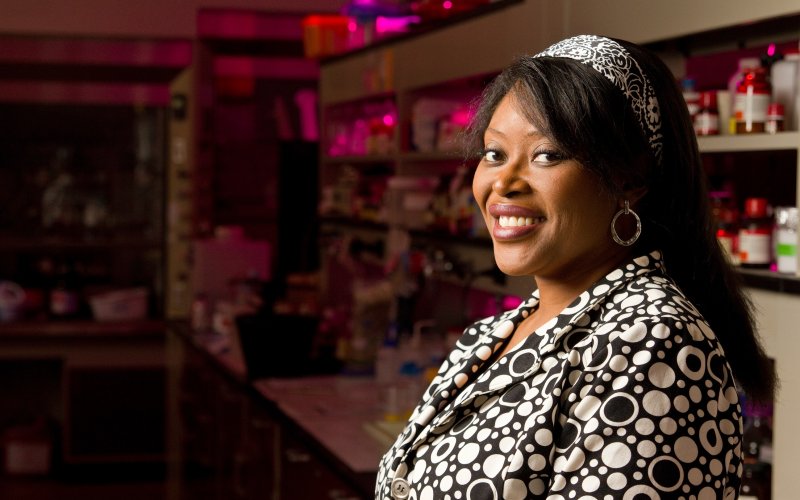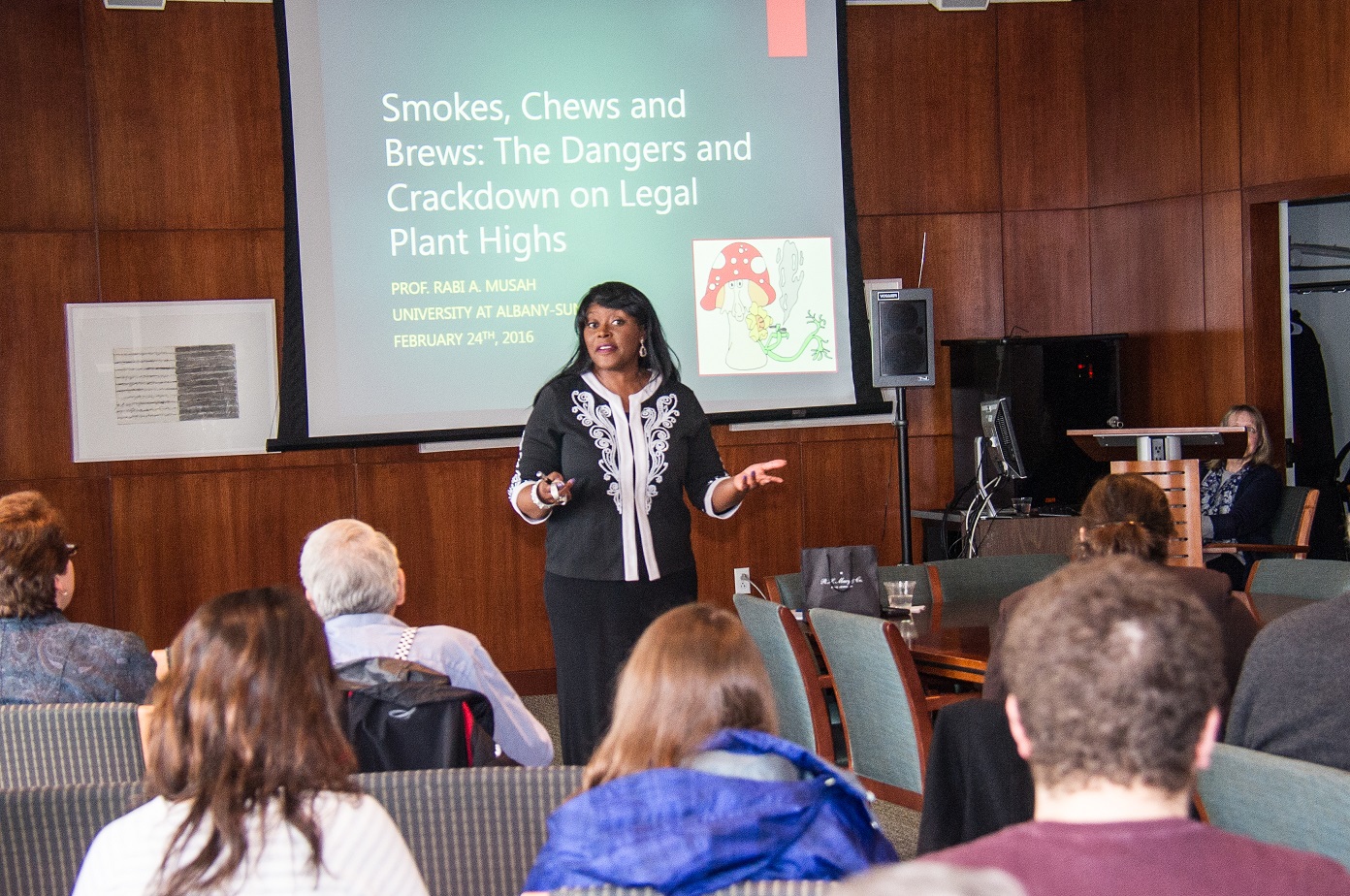Hemp or Marijuana? Forensic Chemist Receives Federal Funding for Rapid Test

By Mike Nolan
ALBANY, N.Y. (March 30, 2023) — While many states have relaxed regulations on growing and possessing marijuana, it remains illegal at the federal level. Federal legalization of hemp, however, happened in the United States several years ago. The industry has quickly grown in popularity due to cannabidiol (CBD) products, an ingredient in cannabis that is derived from hemp plants and may provide benefits for anxiety, depression and pain.
Both hemp and marijuana belong to the same species, Cannabis sativa (C. sativa), and the two plants look similar. The defining difference is the level of their psychoactive component — tetrahydrocannabinol or THC.
A rapid field test being developed by Rabi Musah, a forensic chemistry professor at the University at Albany, might soon offer a new approach that targets the metabolomic differences between the two plants, ensuring only marijuana samples are seized by legal authorities.
The U.S. Department of Justice (DOJ) is supporting the Musah Lab with a $401,988 grant to develop and validate the test through December 2024.
“When it comes to identifying C. sativa plant material as being either hemp or marijuana, existing methods rely upon determining the amount of THC that is present,” said Musah, who is affiliated with both the Department of Chemistry at the College of Arts and Sciences and The RNA Institute. “Current federal laws stipulate that samples containing more than 0.3% THC are marijuana, while samples which contain less than or equal to 0.3% THC are hemp. This definition has imposed numerous challenges on crime laboratories, at both the state and federal levels, because all C. sativa samples must be analyzed in order to make the assessment. This is time-consuming and resource intensive.
“One approach for reducing the number of samples that are subjected to confirmatory testing is to screen the samples in the field. Having a field-deployable method that can be used at the crime scene, and which can rapidly and accurately identify a sample as either hemp or marijuana would ensure that only marijuana samples are seized for further subsequent confirmatory testing.”
Cannabis Field Test
Musah believes that by targeting and exploiting the metabolomic differences, their field test can easily differentiate hemp and marijuana in real-time, with minimal to no sample preparation needed.

Her approach utilizes high-level computational calculations that can investigate the interactions between relevant distinguishing molecules and metal ions. The reactions are hypothesized to give a color change, indicating which samples are marijuana and which are hemp, with the marijuana samples yielding a specific color response.
“Our calculations will investigate the interactions of cannabinoids, such as the psychoactive component of marijuana (THC), with other molecules that yield a discernible color change,” Musah said. “After all computational and experimental studies are completed, and the optimal interactions have been determined, we will generate a field-deployable test that is based on our results.
“Ultimately, when an unknown C. sativa material is examined using our field test, the analyst will receive an instant identification regarding the variety-type of the sample, either as marijuana or hemp.”
If successful, Musah says additional funding would be needed to move toward commercialization, with the field test being marketed to licensed federal organizations and other law enforcement agencies.
Identifying Plant-Derived Unknowns
The U.S. National Institute of Justice, part of DOJ, has awarded Musah’s lab funding for six projects over the last decade. The projects are focused on the forensic analysis of samples that include designer drugs, psychotropic plant species, new psychoactive substances and cannabinoid-infused edibles, entomological evidence and complex matrices.
The central focus is on the application of an ambient ionization technique termed “Direct Analysis in Real Time – High-Resolution Mass Spectrometry” or “DART-HRMS,” which can be used to rapidly survey the molecules contained in a sample with little to no sample pre-treatment.
“While the instrumental techniques that will be leveraged through this new project are not directly related to previous work, many of our studies share the fundamental idea of identifying plant unknown materials to aid forensic investigations,” Musah said.
Musah is collaborating with several UAlbany graduate students and post-docs in her lab to conduct the research. Along with the DOJ, she’s also looking to foster new connections with marijuana suppliers who were recently approved by the U.S. Drug Enforcement Administration to supply research-grade marijuana.




